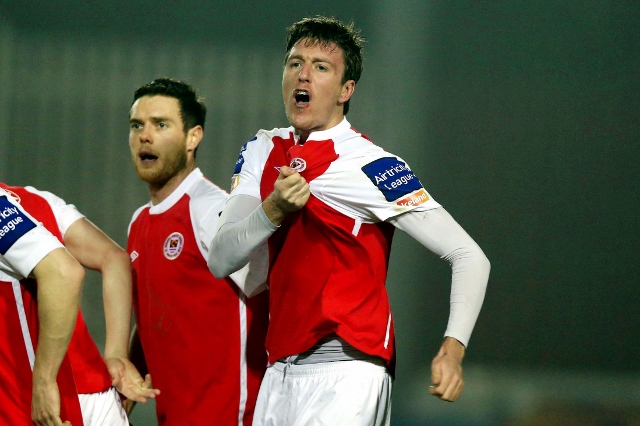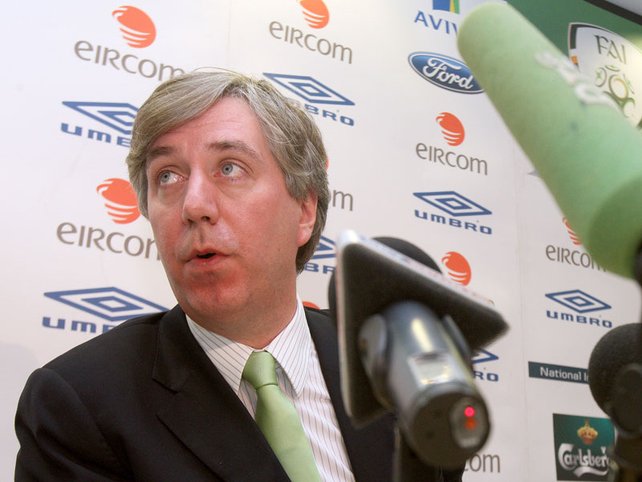Ross Mullen | Staff Writer
Even during my time following the League of Ireland, a relatively short one by some comparisons it must be said, I have seen crowds dwindle and deplete. I once stood behind the goal in Dalymount Park alongside my dad in awe at the throngs of people surrounding us. Three sides of that ancient turf were once engulfed with feverous fans, and decades before my time, even the four sides were not enough to meet demand as those brave enough set up camp upon the tin roof. Sadly, now those days can only be experienced in photographs. The Connaught Street stand lays in ruin, closed off to supporters out of fear the rusted seats and crumbling concrete could collapse at any moment. The Des Kelly Stand, the one I used to frequent behind the goal remains desolate, but for the odd game a year. While the Jodi Stand which stretches down one touchline has also suffered the same decline. As a youngster I remember people clambering for seats. Numerous people congregated in the aisles, unable or uninterested in getting a seat while others piled into rows, numbers far outweighing the available seats. Now, people are dotted throughout, enough empty space for even the away supporters to feel at home in their corner.
The League of Ireland returned last Friday and I fear the same aspects will dominate public opinion this season as have done in recent years; lack of money, lack of talent, lack of interest. One can simply point to the demise of Monaghan United, only just promoted, as a manifestation of the plethora of problems our national league faces. Ones which the powers that be at the F.A.I. fail to take much notice of, or even remotely care about. When Monaghan died, they joined a cemetery which can also boast to contain the other recently deceased; Sporting Fingal, Galway United, Kildare County, Dublin City and Kilkenny City. “7 Clubs in 6 Years, Too Much F.A.I.lure” read a banner unveiled by St. Pat’s fans back in 2012. The League of Ireland still survives, but is regularly interrupted with fiascos and debacles which seem more suited to rashly organised 5 a-side competitions, not a national league.
John Delaney, Chief Executive of the FAI ,earned €400,000 in 2011 while in the same year, grants given to clubs were cut by around the same amount (€377,000). The winner of the League of Ireland gets a measly €100,000 in comparison. This is the same man who was videoed in Poland drunk, hoisted aloft by Irish fans while at home, Monaghan were forced to vacate their position in the league. The problems with our national competition are vast but those at the top do not seem to care. At the moment, clubs are surviving due to the commitment and dedication of fans who volunteer their time. They owe very little, if anything, to those in charge. It’s incredibly difficult to justify that salary for even the most talented or skilled worker in their field, it is impossible to do so for the head of such shambolic association. I won’t even get into his laughable plea to FIFA for Ireland to be included as the “33rd Team” at the last World Cup, embarrassing to say the least.
Nonetheless, the troubles that the league endures run deeper. The FAI, no matter how competent cannot force people to go to games. They can’t merely create talent to match the top European leagues. We, the Irish public tend lack any sort of interest in their local clubs and it is something I find difficult to fathom. The idea of avidly following a team, turning up weekly to see your team live is a notion that is distinctly foreign to Irish football fans but is an essential part of any league around the world. Disappointingly, our idea of live football revolves around which games Sky has scheduled for Saturday afternoon, not what is taking place in the local vicinity. The bright lights of the Premier League seem to have blinded us to our local team. The term “barstooler” is almost synonymous with “football fan” in a society where we lament our lack of world class talent by ignoring any that exists. But some League of Ireland fans do little to help, lambasting those who veer towards our neighbouring leagues instead of encouraging them to at least taste the Irish equivalent. There is also the sense of preaching to the converted, the rest simply don’t understand the relationship, and unfortunately, the majority never will.
I write this as I watch the national team play Serbia where six players in the Irish starting eleven (Forde, Coleman, Ward, McLean, Hoolahan and Long) all began their professional playing career in the League of Ireland. The talent, while incomparable with the Premier League, is not as poor as believed. Similarly, talent does not necessarily equate to entertainment. Live football can evoke feelings of ecstasy, fury, frustration, depression, the list is endless. The same attachment, the same connection cannot be felt in front of a television screen, no matter how much you think the game means to you. At a live game, those beside you become your weekly companions, just as embroiled in the whirlwind of emotion as you are. The crowd breathes in unison, its emotions shooting from various states of ecstasy and fury throughout. You understand, they understand.
The new season still kicks off with new ambition, new optimism and hopefully some new fans. Fans are the integral facet. A team, let alone a league, cannot function without them. Our league’s predicament remains one of difficulty, but there still remains reason for optimism. Keith Fahey’s move to St. Pat’s, and the transfer of ex-international Stephen McPhail to the league bolsters the growing collection of talent while the return of Limerick last season coupled with Athlone Town’s promotion signals a recovery by previous strongholds for League of Ireland football. The potential is there, the only question is, will anyone turn off the television and bother to show up?








